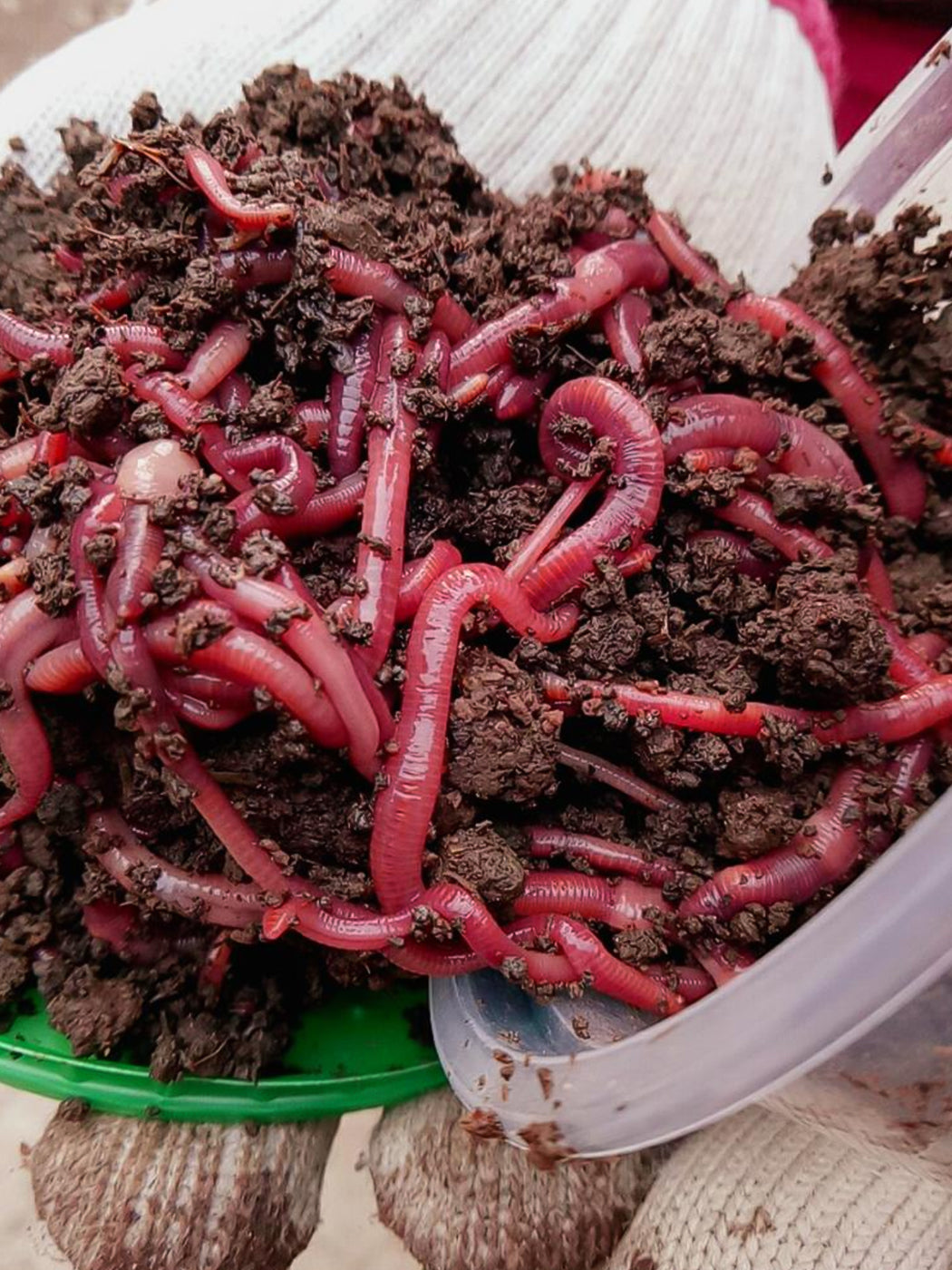Take Care of Your Lawn with the Best Products from Lake Hickory Bait
Take Care of Your Lawn with the Best Products from Lake Hickory Bait
Blog Article
Red Wigglers: The Unsung Heroes of Organic Waste Recycling
Red wigglers, or Eisenia fetida, offer as essential representatives in the organic waste reusing process, transforming thrown out products right into valuable vermicompost. As the globe increasingly looks for options to combat waste accumulation and improve farming productivity, comprehending the function of these worms becomes vital.
What Are Red Wigglers?
The amazing durability of red wigglers, medically called Eisenia fetida, underscores their crucial role in natural waste recycling. These little, reddish-brown earthworms are generally found in decomposing raw material, such as compost heap and manure stacks. Lake Hickory Bait. Unlike various other earthworm types, red wigglers thrive in nutrient-rich atmospheres and are very reliable at breaking down organic products, making them necessary for vermicomposting

(Red Wiggler Express)In enhancement to their function in waste decrease, red wigglers add to soil wellness by enhancing soil framework and aeration via their burrowing activities (Lake Hickory Bait). Their presence in composting systems not only boosts decay prices but additionally advertises a lasting strategy to lose administration, showing their relevance in ecological preservation efforts
Advantages of Composting With Worms
Composting with worms, especially red wigglers, offers various benefits that boost both waste management and soil health and wellness. These worms efficiently damage down organic waste, converting it into nutrient-rich vermicompost that enriches dirt. This process speeds up decomposition, permitting a much faster recycling of kitchen area scraps and various other organic products compared to typical composting methods.
Additionally, the vermicompost produced by red wigglers is including valuable microbes, which assist enhance dirt structure, aeration, and moisture retention. This enhances the overall health and wellness of plants, promoting vigorous development and raised yields in gardens and farming setups. Furthermore, making use of worms in composting reduces the production of greenhouse gases, such as methane, adding to a much more lasting waste monitoring system.

Just How to Begin Vermicomposting
Developing a vermicomposting system is an uncomplicated process that can produce considerable advantages for both waste monitoring and dirt enrichment. To begin, select a suitable container, such as a plastic bin or wooden box, with appropriate ventilation holes to guarantee appropriate air flow. The dimensions should ideally be around 2 feet by 3 feet, allowing sufficient area for the worms to prosper.
Following, prepare bed linens product, which can contain shredded paper, cardboard, or coconut coir. This bedding ought to be moistened to produce a suitable habitat for the worms. Once the bed linen remains in location, introduce red wigglers (Eisenia fetida) into the bin, normally around one extra pound of worms for every square foot of area.
Complying with the positioning of worms, include natural waste, such as vegetables and fruit scraps, coffee grounds, and smashed eggshells. Stay clear of including dairy, meat, or oils, as these can produce smells and attract parasites. Ultimately, position the bin in a shaded, temperature-controlled location to preserve ideal conditions for worm activity. With these actions, you will successfully start a vermicomposting system that adds to sustainable waste administration and enhances your soil.
Maintaining a Healthy Worm Container
(Red Wiggler Express)Maintaining a worm container flourishing requires routine focus and treatment to make sure the health and wellness of the red wigglers and the efficiency of the composting process. Correct maintenance starts with monitoring the wetness levels; the bin needs to be moist however not soaked. A good guideline is to maintain an uniformity comparable to a wrung-out sponge.
Aeration is vital. Gently mixing the bed linens and food scraps every few see this site weeks stops compaction and makes certain that all worms have access to oxygen. Furthermore, it is crucial to feed the worms appropriately. A balanced diet regimen of vegetables and fruit scraps, coffee grounds, and crushed eggshells ought to be supplied in moderation to avoid overfeeding, which can result in smells and parasites.
Temperature level policy is one more crucial facet. Red wigglers grow in a variety of 55 to 77 degrees Fahrenheit. If the bin ends up being as well warm or chilly, the worms may become stressed out - Lake Hickory Bait. Occasionally check for signs of health, such as worm populace development and the visibility of healthy and balanced spreadings. By carefully taking care of these variables, one can keep a durable and productive worm container.
Influence On Sustainable Living
The effective upkeep of a worm container not only benefits the wellness of red wigglers however also contributes significantly to sustainable living techniques. By reusing natural waste, such as kitchen area scraps and yard particles, red wigglers assist draw away considerable amounts of product from garbage dumps. This reduction in waste not just decreases greenhouse gas exhausts however also decreases the environmental concern connected with waste management.
In addition, the castings generated by red wigglers function as a nutrient-rich natural fertilizer, boosting soil wellness and promoting plant development. This natural alternative to chemical plant foods supports sustainable farming and horticulture techniques, decreasing dependence on synthetic inputs that can damage environments. Furthermore, worm composting fosters recognition of waste administration, encouraging people and communities to embrace even more sustainable behaviors.

Final Thought
In recap, red wigglers work as crucial factors to natural waste reusing via their reliable decay of natural materials. Their capacity to produce nutrient-rich vermicompost enhances dirt health and wellness and sustains lasting agricultural practices. By incorporating vermicomposting into waste administration methods, people and areas can substantially lower waste while advertising ecological sustainability. The function of Eisenia fetida in promoting healthy ecological communities underscores the importance of these organisms in achieving lasting living and boosting soil fertility.
Report this page